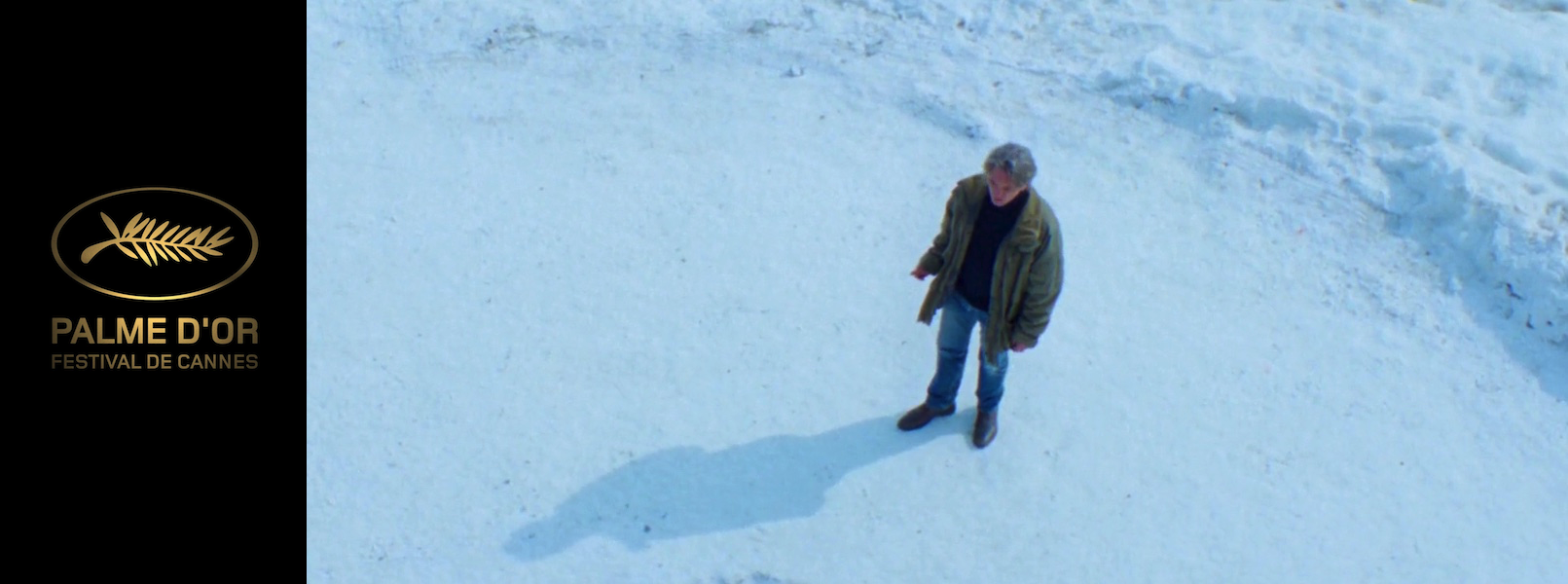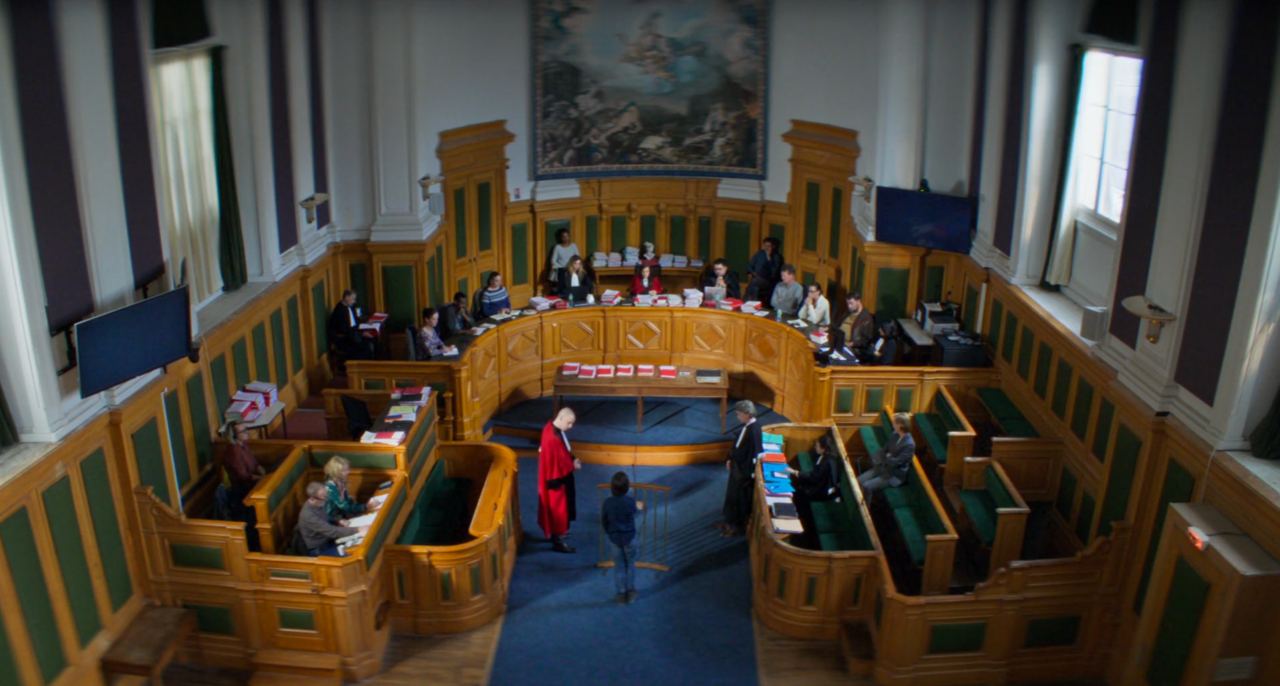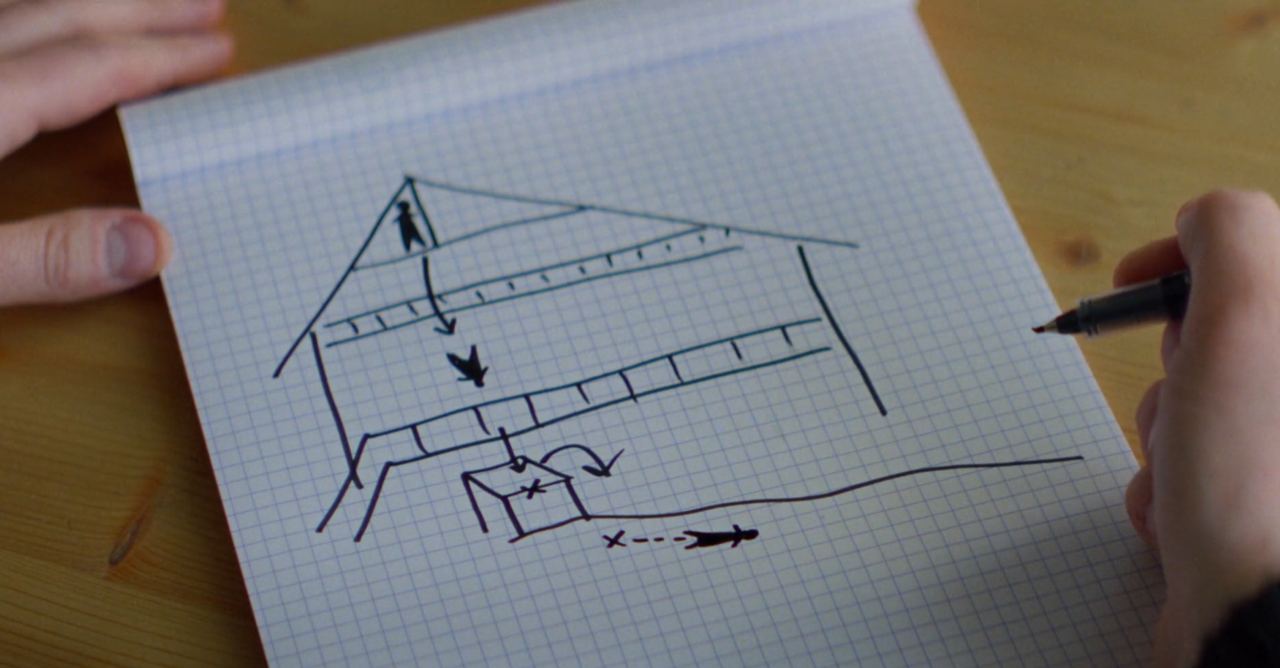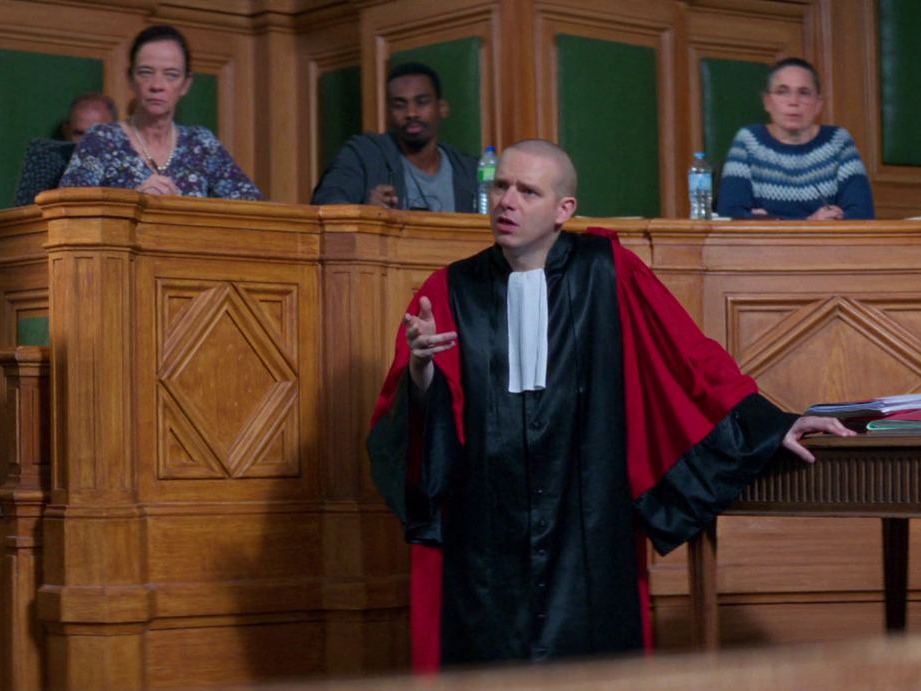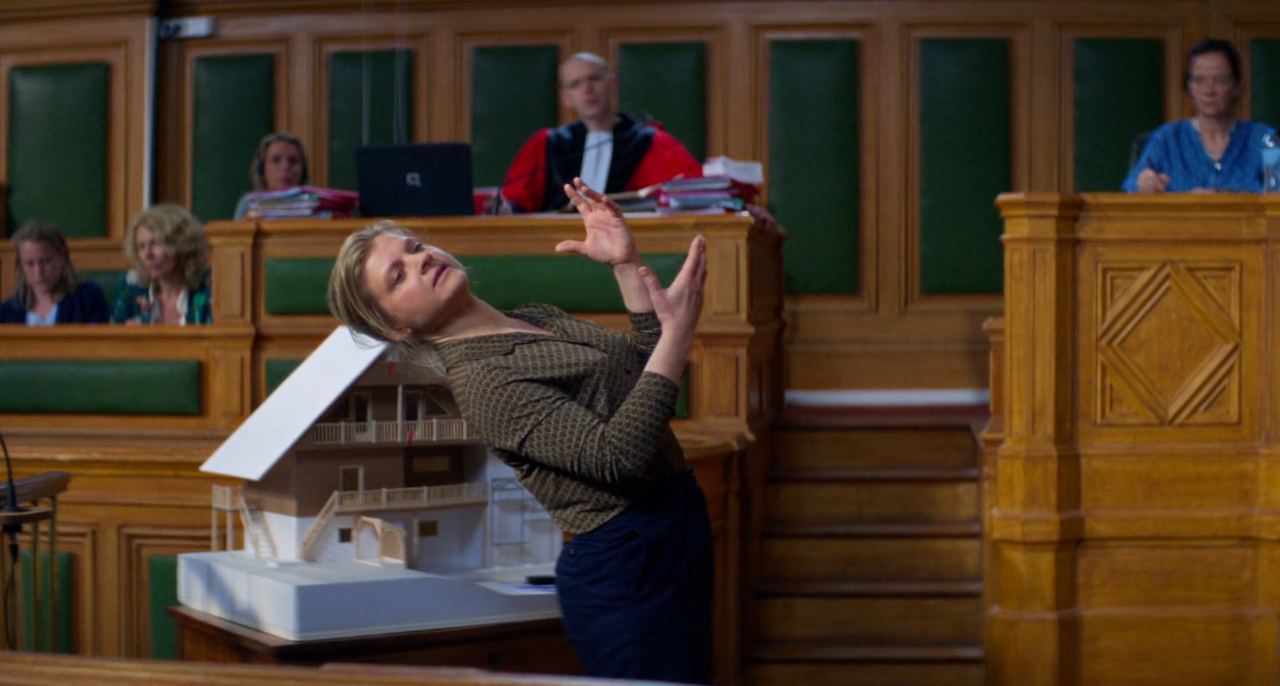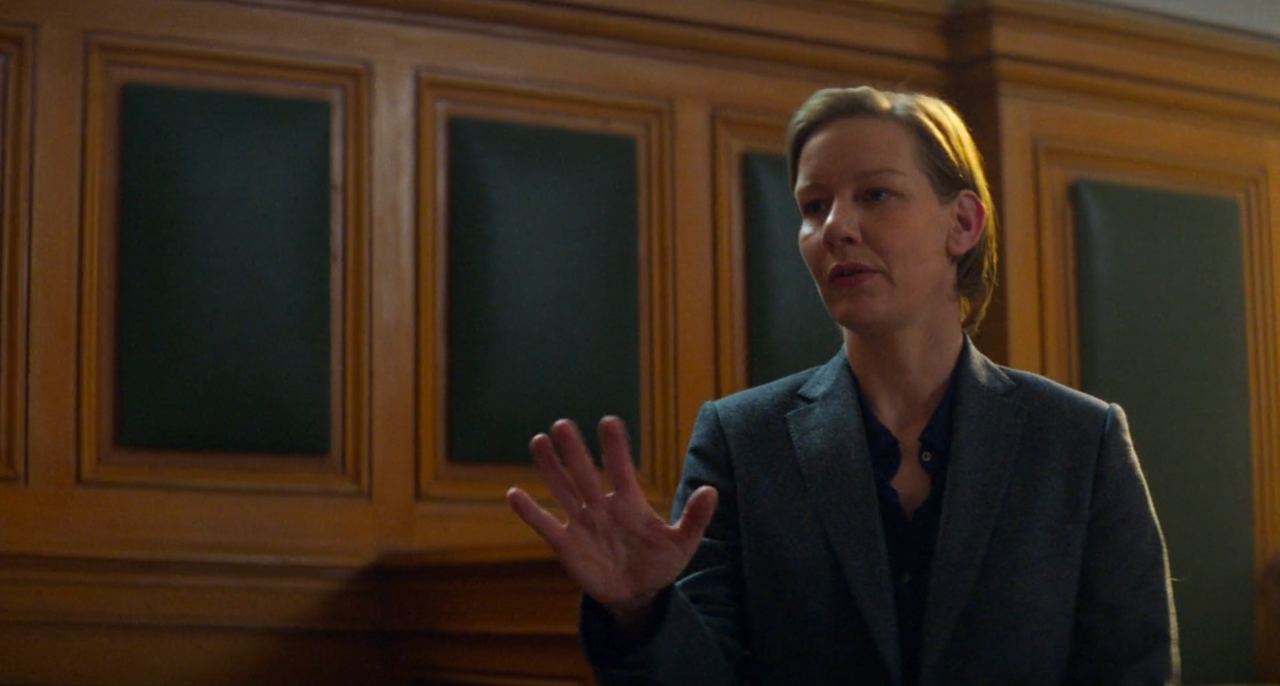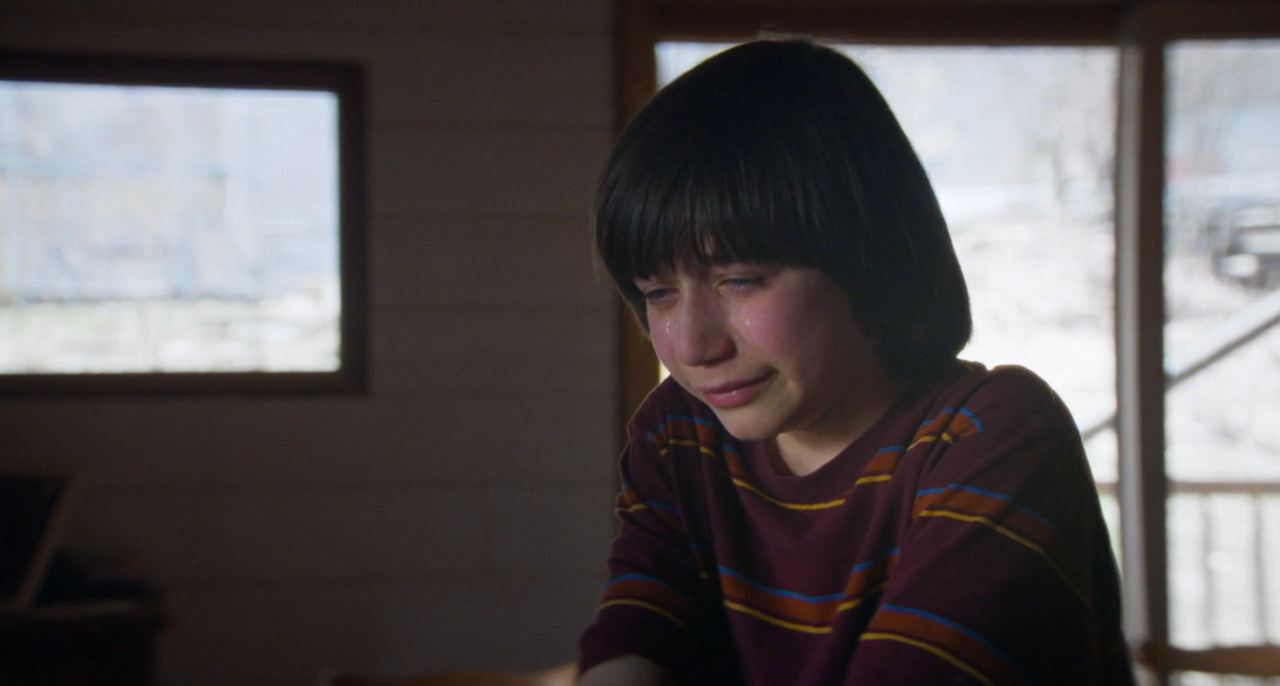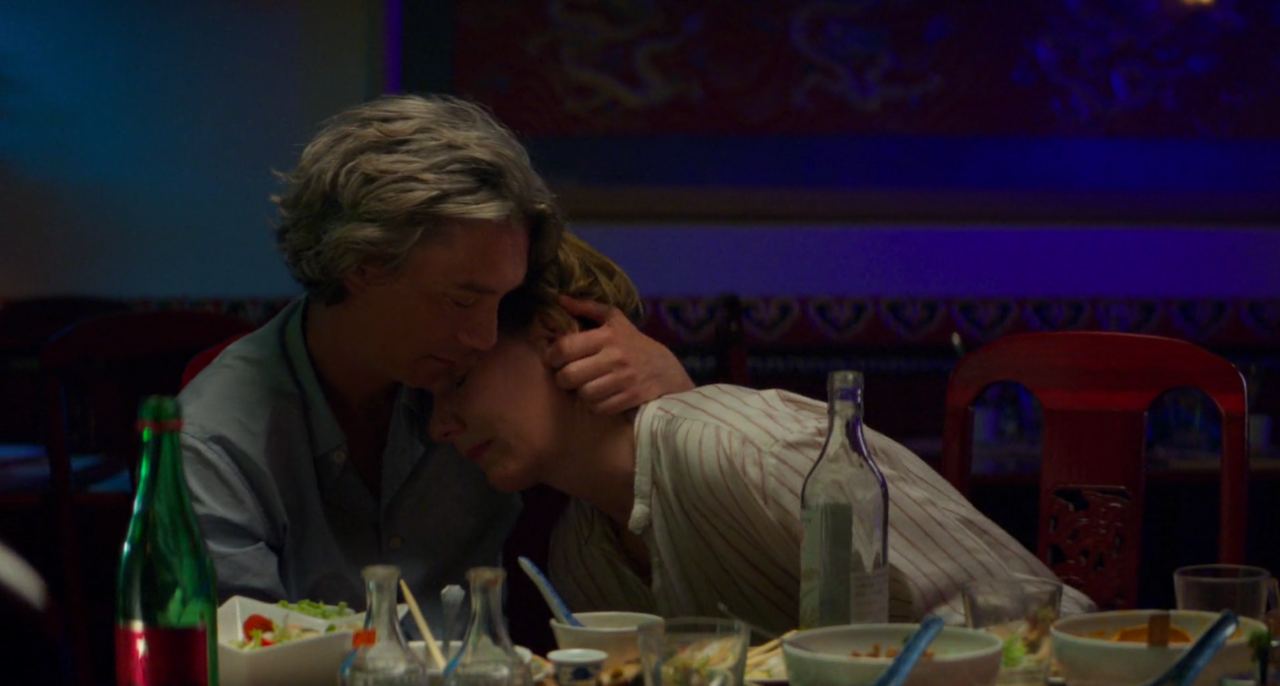Legal and courtroom dramas are often fast-paced thrillers where the downtrodden and weak get their day in court and, against all odds, triumph over some oppressive force. Anatomy of a Fall (2023) masterfully subverts this by showing instead a mundane yet tragic reality of the justice system: how the most consequential of all truths - judicial truth - can rely so much on something as fallible and malleable as human memory.
The Plot
Sandra is a well-known author whose husband, Samuel, dies after falling from the attic of their rural home in France. Their son, Daniel, finds his father’s body in the snow after going out for a walk with his seeing-eye dog.
An autopsy is conducted, where the forensic pathologist is unable to rule out involvement by a third-party, as the head injury is found to have been inflicted before the body hit the ground. This is followed by a pre-trial investigation conducted by the authorities, which exposed lies told by Sandra and ultimately resulted in her indictment for the death of her husband.
Surprisingly, Sandra is released on bail, on the condition that she allow a court-appointed monitor into their home to preserve the integrity of Daniel’s testimony.
During trial, the prosecution seeks to establish Sandra’s motive for killing Samuel by painting a picture of a couple mired in marital woes stemming from deep resentment caused, among others, by Sandra’s infidelity and the accident that resulted in their son’s blindness. The prosecution then presents an audio recording of an argument between the couple that turned into a physical fight the day before Samuel’s death to establish Sandra’s capability to commit such a violent act.
The defense (led by Vincent, an old lawyer friend of Sandra’s) tries to establish her innocence by focusing on Samuel’s propensity to self-harm. To do so, Sandra gave testimony on her husband’s struggles with mental health issues, including an account of an incident where she found Samuel’s vomit on the floor with “white spots” which she thought were pills. This is later corroborated by Daniel, who resorted to performing an unfortunate reenactment involving his dog based on his own recollection of that day.
Sandra is acquitted and returns home to Daniel, their lives forever changed by the tragic loss of Samuel and the harrowing ordeal they went through, just because their personal tragedy caught the attention of the justice system.
IMHO, A Masterpiece
Like any well-written piece of cinematography, Anatomy of a Fall is highly thought-provoking and lends itself to a multitude of intepretations. It teases the audience into asking the inevitable question (“Did she do it?”) but masterfully leads the conversation back to the titular theme: conducting an anatomy of Samuel’s fall.
It explores diverse themes, while remaining focused on the main story. It achieves this by subtly introducing many pieces of information but only allowing them to serve as devices that enhance the narrative, not hijack it. Each scene and each line of dialog serve to highlight the complexity of the characters and the tragedies that befell them, including their aftermaths.
For example, we find out that Sandra was very capable of deception after we see how she lied during the investigation and how she cheated on Samuel with another woman. She was depicted as an ambitious and successful woman, who was unafraid to show cold displeasure described as “castrating” by Samuel’s therapist during his testimony. The movie introduces these LGBT and feminist elements in a subtle way so that they are mere accidents to her character flaws (i.e. an unapologetically independent wife who was unfaithful), as they do not linger by defining her.
However, we also see what a good and loving mother she was to Daniel when she did her best to empower Daniel after he lost his sight, and when she tried to protect him by assuring him that she was not a monster in a bid to preserve his faith in the two most important people in his life, his parents.
This balanced view of Sandra’s character, along with minimal use of background music, allows the audience to keep Sandra at an arm’s length. Even though we follow her throughout the movie, we do not fall in love with her, nor do we end up despising her. Instead of becoming invested in establishing her innocence or proving her guilt, we want to uncover the truth.
By the end of the movie, however, we find ourselves knowing much but still not enough. Most of what we do know is derived from human memories, mental recollections shaped by the individual realities born out of a lifetime of personal experiences of those who related them, and highly susceptible to being tainted by the ones who elicit them.
This leads me to what impressed me the most about Anatomy of a Fall: it cleverly and consistently evoked a sense of uncertainty around the use of human memory as evidence in courts of justice.
Truth Be Told
Before proceeding to discuss some legalese, it is important to differentiate between judicial truth, which is established in a court of law, and factual truth, which is what truly took place. While it is important these two coincide for the sake of public trust in the justice system, they can and they do diverge.
Anatomy of a Fall is a prime example of the diversity of systems through which judicial truth is determined across the world, as its courtroom drama takes place within the French inquisitorial system of criminal justice. The court proceedings can, therefore, come as a surprise to those who are more familiar with the adversarial/accusatorial legal system (as portrayed in Hollywood legal dramas such as Legally Blonde, Drop Dead Diva, A Time to Kill, 12 Angry Men, and Anatomy of a Murder).
Its English-speaking audience also inevitably finds itself relating to Sandra, who speaks mostly in English before the trial (the film is less than 50% in English). After watching the more or less familiar pre-trial investigation, the English-speaking audience is, along with Sandra, quickly plunged into a French criminal trial, where they see court proceedings that are worlds apart from the rigidity of the adversarial/accusatorial system usually shown in Hollywood films.
I can still remember my utter surprise when the public prosecutor, after questioning the first witness, suddenly turned to Sandra and started asking her questions without first calling her to the witness stand.
Systems of Adjudication - Adversarial vs. Inquisitorial
The main difference between these two legal systems rests on how judicial truth is ascertained. Trust played a key role in their evolution. The adversarial system favors minimal state intervention due to a lack of trust in it. On the other hand, the inquisitorial system necessitates a great level of trust by the citizenry in state institutions for the maximal level of intervention that characterizes it.
It is important to note that there is no country that follows a system of adjudication that is “purely” adversarial or inquisitorial, nor are these the only legal systems that exist in the world.
As such, countries are classified into these two systems based on how closely their legal systems align with either. There are also countries that follow a combination of these two systems, such as France which follows the adversarial system for civil cases and the inquisitorial system for criminal cases.
Better for Ten Guilty Men to Walk Free, Than One Innocent Declared Guilty
In the adversarial/accusatorial system usually found in countries that follow the Common Law tradition (and the Philippines), the focus is more on fair play and the just treatment of the accused, and less on determining the truth. This is exemplified by Blackstone’s Ratio.
Here, two opposing parties compete with each other, through their lawyers, to win the case by either satisfying the burden of proof (as required by the nature of the case) or by presenting evidence that prevents the other party from doing so.
The adversarial parties each gather and present a body of evidence to prove their respective theories of the case before a passive adjudicator, who makes a decision based only on the evidence submitted (which may be challenged by the opposing party upon examination) and admitted. The adjudicator may be a judge, who also serves as a referee of sorts by enforcing rules that govern court proceedings, or a jury.
The system is rigid to promote a just and fair trial, and governed by rules that may impose strict admissibility requirements on evidence presented to the court, such as prohibiting statements deemed to be mere hearsay.
In criminal cases, such as the case in this film, the burden of proof required for the prosecution to overcome the presumption of the accused’s innocence would be to prove beyond reasonable doubt that they committed the crime. In keeping with the mindset that it’s a fair competition, the awesome might of the state through the public prosecutor is, theoretically, matched by the equally powerful right of the accused to be presumed innocent until proven guilty following a fair trial.
Judicial truth, in theory, emerges in the aftermath of the competitive clash between the opposing parties, as represented by their lawyers.
Seek And Ye Shalt Find
Presiding Judge (to Daniel): The trial is not about you hearing (the facts that may hurt you). It is about establishing the truth, without being forced to censor ourselves.
On the other hand, the inquisitorial system, which commonly exists in countries that follow the Civil Law tradition, is described as being more concerned about seeking the truth. It is not a competition. Thus, the pursuit of truth takes precedence over technicalities of fair play, which can be brushed aside if they undermine efforts to establish what truly transpired. To illustrate just how different things are, I struggled to wrap my head around the concept of témoin asisté, which was Sandra’s status before she was indicted.
Also, instead of being a passive actor who merely receives evidence presented to them by opposing parties during court proceedings, judges in the inquisitorial system take a very active role throughout the process, as the case is treated as a judicial inquiry rather than a legal dispute. As a result, judges generally have direct control over the entire course of a case and are deeply involved in a wide range of activities such as the gathering of evidence in a dossier (with input from parties involved) and the questioning of witnesses, in addition to presiding over and deliberating a case, handing down the verdict, and determining the sentence.
Criminal Cases a là française
As mentioned earlier, the inquisitorial system of adjudication applies to criminal cases in France. This truth-seeking approach to criminal justice is manifested in Article 81 of the French Code of Criminal Procedure, which states: “The investigating judge (juge d’instruction) undertakes in accordance with the law any investigative step he deems useful for the discovery of the truth. He seeks out evidence of innocence as well as guilt”. Heinous crimes such as murder are handled by the juge d’instruction, while less serious ones are delegated to the police under the supervision of the public prosecutor (or the procureur, another judicial officer but one who hierachically belongs to the executive department, i.e. the French Ministry of Justice).
Since criminal cases are treated as judicial inquiries into the truth, formal rules on admissibility of evidence don’t really make a lot of sense - remember, it’s a judge who gathers both inculpatory and exculpatory evidence in the first place. Instead of such rules, judges are guided by Article 427 of the French Code of Criminal Procedure, which states: “Except where the law otherwise provides, offenses may be proved by any mode of evidence and the judge decides according to his intimate/innermost conviction” - this is also known as the principle of freedom of proof.
This principle is at the core of what flummoxed me as I watched Anatomy of a Fall, as it is quite different from the concept of burden of proof that I’m familiar with. Through this principle, French judges presiding over a criminal case may not disregard evidence solely on the basis that it was obtained through unlawful or unfair means.
It is also the same principle that guides how a judgment is to be made, i.e. through intimate/innermost conviction or l’intime conviction. While this merely sounds like a different way of saying “proof beyond reasonable doubt” or “moral certainty” because an accused is still acquitted or convicted according to the judge’s conscience based on the evidence during trial, the implementation of l’intime conviction coupled with a lack of burden of proof (remember, it is a truth-seeking judicial inquiry, not an adversarial proceeding) means that the presumption of innocence is rendered ineffective because the starting point is a dossier filled with incriminating evidence that the accused has to explain or overcome (as opposed to the prosecution proving the guilt of the accused beyond reasonable doubt). In other words, how can you be convinced of someone’s innocence when you were deeply involved in gathering the evidence that was sufficient to warrant an indictment?
This is what we see on Anatomy of a Fall - Sandra couldn’t just refuse to answer questions, she was expected to cooperate and actively demonstrate her innocence by controverting any damning evidence that they had gathered.
Human Memory on Trial
Sandra: Do you remember me from before, when we first met?
Vincent: Yes, I do. Of course.
Sandra: I don’t. What was I like?
Central to the determination of the judicial truth in Anatomy of a Fall is the summoning of witnesses who might be able to shed some light on Samuel’s death based on their recollections. This obviously included Sandra and Daniel, but the court also called on the college student who interviewed Sandra just before Samuel was found dead, as well as Samuel’s therapist to testify.
Fallible and Malleable
Ms. Berger (to Daniel): Your memories are all you’re sure of, and it’s important to tell the jury.
In the movie, the unreliability of human memory was demonstrated when Daniel gave conflicting statements during the pre-trial judicial interview and during the reenactment that was conducted. First, he confidently claimed that he was already outside the house when he heard his parents talking over very loud music, resisting the leading questions posed to him by the investigating judge that his parents were fighting. However, he later changed his statement during the reenactment, stating that he had made a mistake and had instead heard them before he stepped out of the house.
These inconsistencies were a headache for the authorities, as they were trying to determine whether Sandra had another heated argument with Samuel moments before he died - in legalese, they were trying to prove mens rea.
As we see in the movie, Daniel’s memory was flawed and he clearly did not belong to the rare group of individuals who have hyperthymesia or the ability to recall near-perfect autobiographical memory.
This flawed nature of human memory is affirmed by science. Research has shown that human memory is not some static printout of events; instead, it’s more like an essay written with Scrabble tiles and rewritten whenever retrieved, in a process known as memory reconsolidation.
This has major implications to the use of human memory, in the form of witness testimony, in the determination of judicial truth. One of the most-cited scholars on this matter, Dr. Elizabeth Loftus, has asserted that human memory is not like a recording device where information can be pulled up at will, and false memories are an unfortunate reality that can come with devastating consequences for the accused.
All is not lost, however, as Dr. Loftus conceded in the highly publicized case of Ghislaine Maxwell that while “peripheral memories” from a traumatic event may be lost, the event’s “core memories” may actually get stronger. I can personally relate to this; after having suffered two harrowing experiences in 2018 and a handful more in early 2020, I still remember the core memories vividly and they still trigger powerful physiological and emotional responses.
With Or Without It
Why do courts, therefore, still rely on human memory if it’s so fallible?
Simple - human memory, in the form of witness testimony, is rarely taken on its own. It is very often used to corroborate other pieces of evidence and vice versa.
Advances in forensic technology, such as the use of DNA evidence, have also helped safeguard innocent people from being wrongfully convicted.
Courtroom Reality
Sandra: That recording is not reality. It’s a part of it, maybe. If you have an extreme moment, an emotional peak you focus on, of course it crushes everything. It may seem like irrefutable proof, but actually warps everything. It’s not reality. It’s our voices, but it’s not who we are.
Vincent: I don’t give a f**k about what is “reality”. You need to start seeing yourself the way others are going to perceive you. The trial is not about the truth.
Every piece of evidence presented to the court is tested for its relevance and its probative value, and eventually all brought together to form a reality of sorts that would become the basis on which the adjudicator would render a decision. In a way, each court case takes a life of its own with a dossier for its memories (in inquisitorial systems). The dossier, however, is not like human memories that undergo reconsolidation.
The pattern of Sandra’s untruthfulness that emerged couldn’t just be set aside and forgotten by the court, it was the logical glue that bound the three things on which the prosecution based her indictment (the suspicious blood splatter, inconsistencies in the reenactment, and the recording of the violent fight that she and Samuel had the day before his death). As the trial progressed, this tainted view of Sandra’s character cast a persistent doubt over her innonence. The fact that the material evidence (i.e. the blood splatter) was inconclusive due to conflicting expert testimonies didn’t really help her case since it did not exculpate her.
Only the introduction of new evidence would dispel the lingering suspicions hanging over Sandra.
L’intime conviction
Daniel’s second time on the witness stand provided the film’s climax. It followed an experiment he conducted on his dog in an attempt to personally corroborate Sandra’s statements about discovering Samuel’s vomit filled with what seemed like pills.
Torn between two horrific theories (that his mother killed his father and that he was abandoned by his father through suicide) and being very much aware that he could lose both of his parents, he desperately sought answers from the court-appointed monitor, Ms. Berger.
Ms. Berger: … To overcome doubt, sometimes we have to decide to sway one way rather than the other. Since you need to believe one thing but have two choices, you must choose.
Daniel: So you have to invent your belief?
Ms. Berger: Yes, well… in a sense.
Daniel: So that means, I’m not sure, and you’re saying I have to pretend I’m sure?
Ms. Berger: No, I’m saying decide. That’s different.
As he addressed the court for the second time, he recounted his version of the events following the discovery of the vomit. He testified that he and his father took the dog to the vet and that his father gently lectured him about death being inevitable and how Daniel must be prepared for it. Daniel then told the court that, upon reflecting on it, his father must have been talking about himself all along.
The masterful way this scene was shown, with Daniel literally putting words on his father’s mouth for an extended period of time, became uncomfortable to watch towards the end, as it took back any certainty that his testimony had given me about Sandra’s innocence.
Did She Do It?
Lawyer: You’re témoin assisté because you were the only person there… And, of course, you’re his wife. … Samuel had no enemies.
Sandra: Stop, stop. I did not kill him.
Lawyer: That’s not the point. Really.
After two and a half hours of watching one of the best legal dramas I’ve ever seen in my life, it became clear to me that it didn’t really matter because there really was no way of knowing for sure if she caused Samuel’s death. Nonetheless, one of the last scenes, when she went out for a celebratory dinner with her lawyers, gave a strong indication of innocence, as she is seen agonizing over something that an innocent person would feel after being put on legal jeopardy.
Sandra: I thought I’d feel relieved. It’s just… if you win, you kind of expect some reward. But there isn’t any. It’s just, it’s just over.
We may never know for sure.
